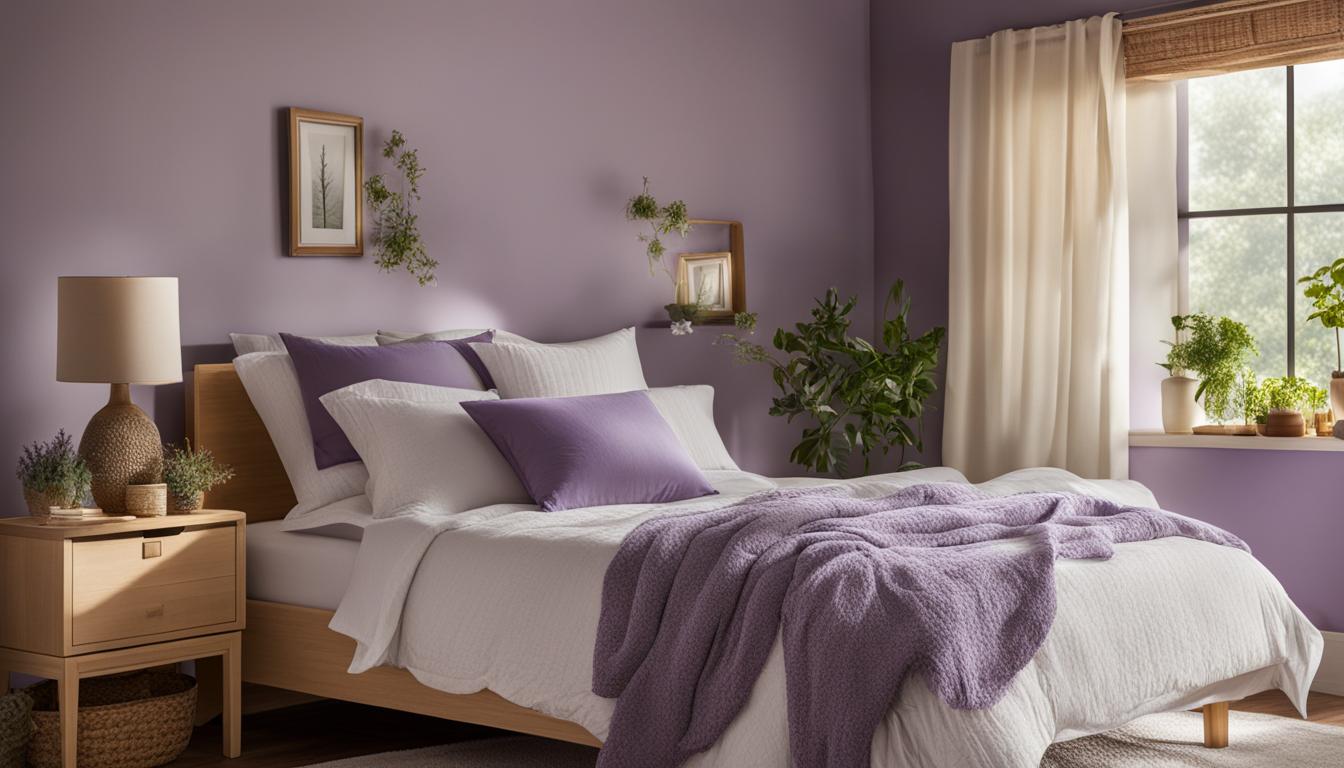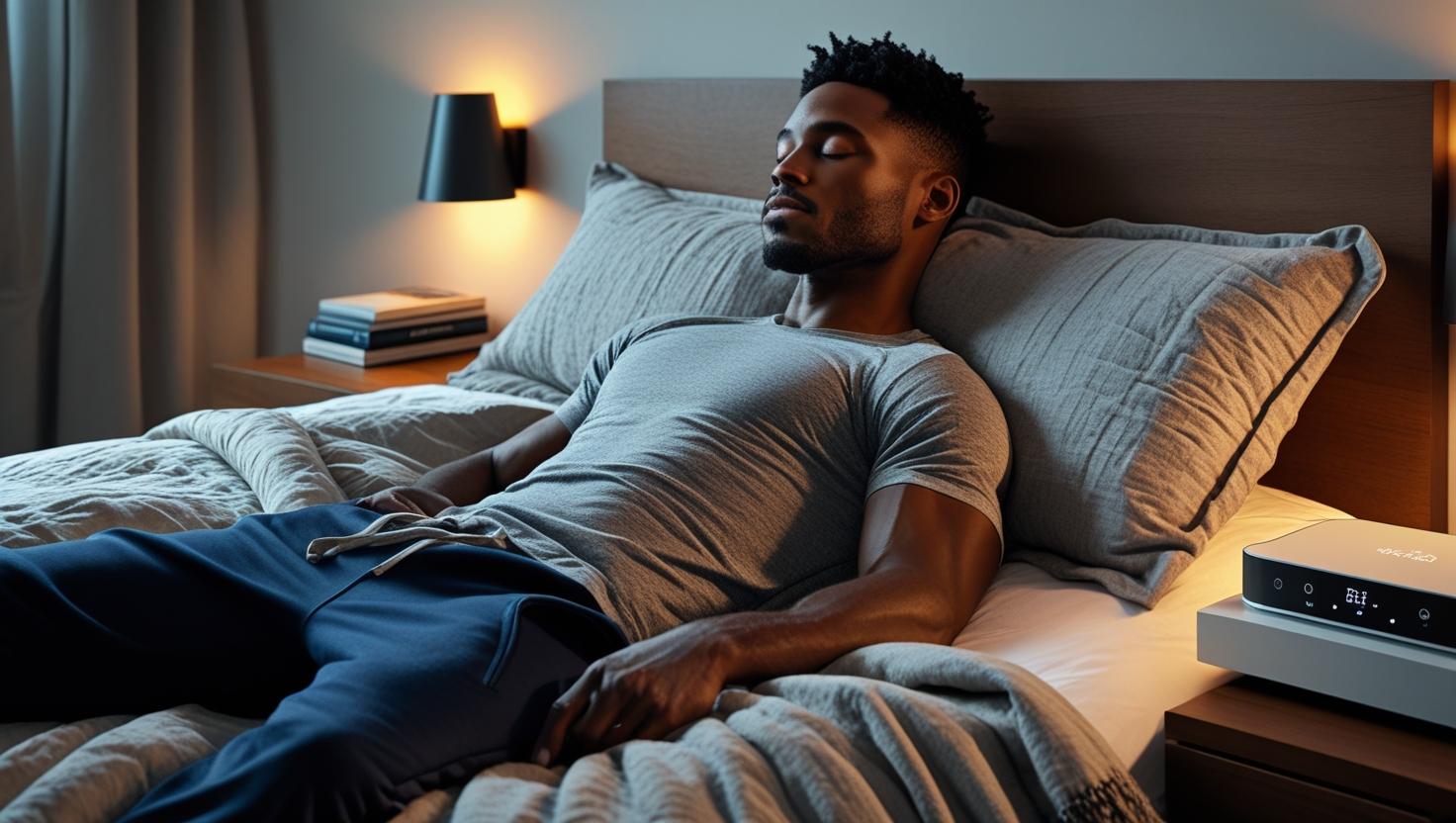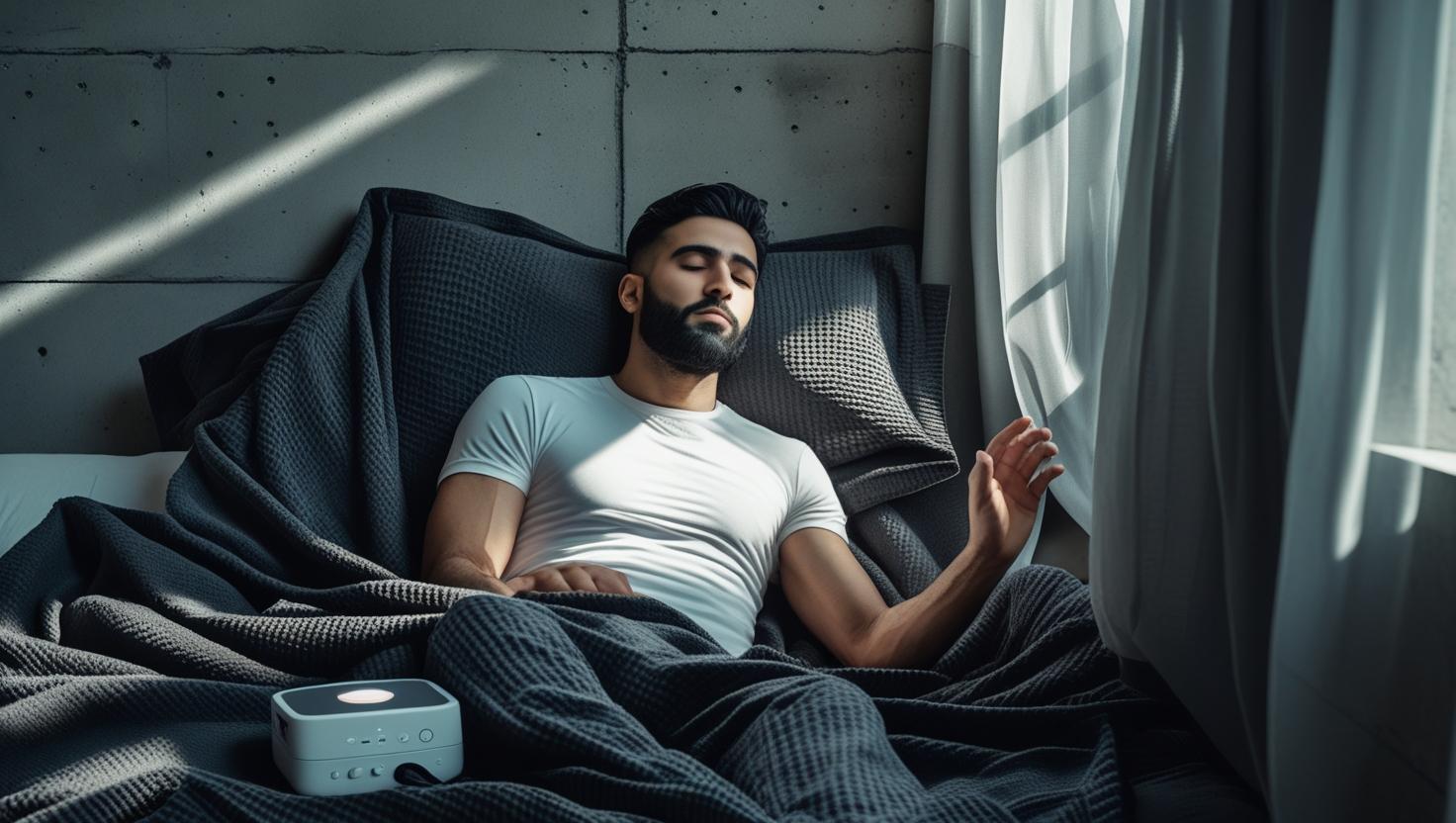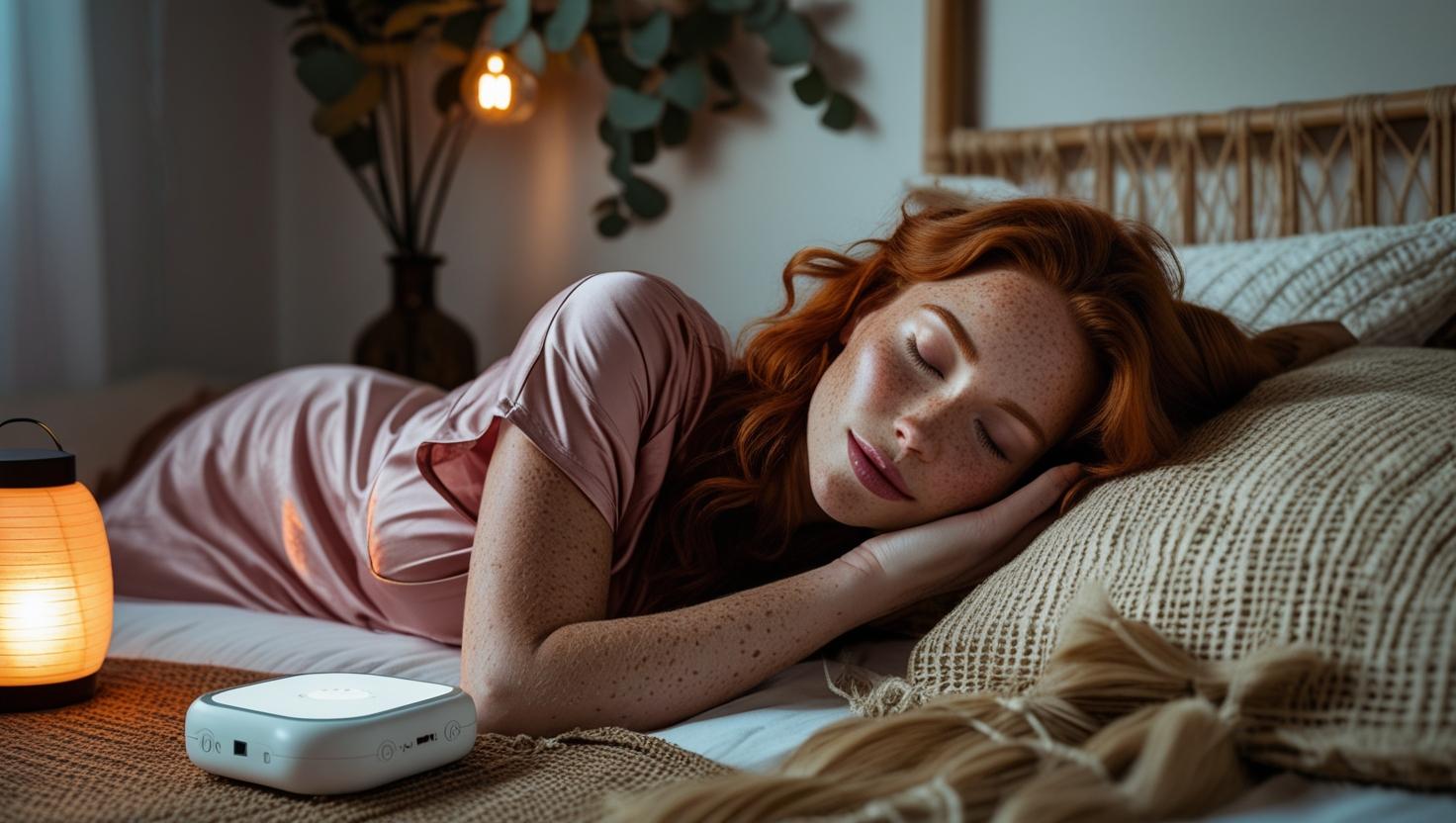Bedroom Environment for Sleep Enhancement
If you’ve ever struggled to fall asleep or wake up feeling unrested, your space may be the missing piece. Building a bedroom environment for sleep enhancement can transform your routine—helping you fall asleep faster and wake up clearer. From light and temperature to sound and scent, a few small tweaks go a long way. Start with our foundational sleep hygiene practices.

Key Takeaways
- Your bedroom environment directly affects sleep quality, duration, and satisfaction.
- Core elements include lighting, temperature, air quality, sound, bedding, layout, and scent.
- Optimizing the room supports melatonin balance, lowers stress, and aligns your circadian rhythm.
- Simple upgrades—blackout curtains, a cooler thermostat, or a purifier—can make a measurable difference in nights and mornings.
- Use evidence-based steps to refine your bedroom environment for sleep enhancement without a full makeover.
Why Your Bedroom Matters for Sleep Quality
A relaxing, well-designed room makes it easier to drift off and stay asleep. Authoritative guides note that dialing in temperature, noise, light, and comfort improves overall sleep quality and next-day functioning. For a quick primer on the fundamentals, see the Sleep Foundation’s overview of the bedroom environment elements that matter and the CDC’s sleep basics checklist.

Light Exposure and Your Circadian Rhythm
Light is the strongest signal to your body clock. Blue-rich light in the evening can delay melatonin, while warm, dim lighting cues relaxation. Aim for darkness at night and bright light in the morning.
- Block streetlight and dawn glow with blackout curtains or an eye mask—see practical tips to make your room darker at night.
- Use amber/red bulbs (<3000K) and dim lights an hour before bed.
- Keep tech out of the bedroom or use night modes—learn how blue light affects sleep.

Temperature Control for Better Sleep
Your body naturally cools at night, so a slightly chilly room helps you fall and stay asleep. Many experts suggest a target in the mid-60s °F; authoritative resources outline an optimal range between about 60–68°F for most adults.
- Set your thermostat cooler before bedtime—see research-informed guidance on the best temperature for sleep.
- Choose breathable bedding (cotton, bamboo, linen) and consider cooling toppers.
- Circulate air with a ceiling or pedestal fan; avoid heavy synthetics that trap heat.
Noise Management and Soundscaping
Noise fragments sleep and reduces deep and REM stages. Soundproof where you can; mask the rest.
- Add rugs, heavy curtains, and weather-stripping to absorb and block sound.
- Use a white-noise machine or fan for consistent masking—explore our guide to sleep sounds.
- Keep electronics out or muted at night; a tech-light bedroom supports better sleep.
Air Quality and Humidity
Clean, fresh air reduces congestion and irritation that can wake you up. Many public-health resources emphasize a cool, dark, quiet space—and minimizing nighttime light and irritants.
- Maintain airflow and consider a HEPA purifier during allergy seasons.
- Keep humidity moderate; ventilate in the daytime when outdoor air is good.
- For shift workers and anyone light-sensitive, NIOSH notes using very dim red light and eliminating blue/white light at night—see NIOSH environment tips.

Layout, Decluttering & Scent Cues
A clear layout lowers visual stress; calming scents can nudge your nervous system toward rest.
- Place your bed against a solid wall, keep pathways clear, and scale furniture to the room—see our bedroom layout principles.
- Declutter surfaces and use closed storage—more tips in our bedroom accessories guide.
- Try lavender or chamomile 30 minutes before bed; avoid synthetic fragrances if you’re sensitive. For a broad checklist, scan WebMD’s sleep environment tips.

Ideal vs. Poor Sleep Environments: Quick Comparison
| Element | Ideal for Sleep Enhancement | Poor for Sleep |
|---|---|---|
| Lighting | Warm, dim lights and blackout curtains | Bright LEDs, blue light, no light control |
| Temperature | Cool room (about mid-60s °F) with breathable bedding | Overheated room, heavy synthetic comforters |
| Noise | Quiet room, steady white noise | Traffic, loud roommates, barking dogs |
| Air Quality | Purified air, adequate ventilation | Dusty air, poor circulation, allergens |
| Clutter & Layout | Minimal design, clear pathways | Crowded surfaces, chaotic layout |
You don’t need a full renovation to see results. Tackle one lever at a time—darken the room, cool it down, reduce noise, and clear visual stress. With steady habit-building and a supportive setup, your bedroom environment for sleep enhancement becomes a nightly cue for deep rest.
FAQ
- What’s the best room temperature for sleep?
- Many experts suggest a mid-60s °F target; authoritative guides recommend roughly 60–68°F for most adults. See the Sleep Foundation’s overview of the best temperature for sleep.
- How can I block noise in my bedroom?
- Layer soft materials (rugs, heavy curtains), weather-strip doors/windows, and add steady white noise. If you’re sensitive to light and sound, NIOSH suggests reducing nighttime light to very dim red and keeping paths safe and dark—see NIOSH environment tips.
- Do scents like lavender really help?
- For many people, calming scents become reliable sleep cues. Keep it simple (lavender, chamomile), use 20–30 minutes before bed, and avoid irritants if you’re sensitive.
- What’s the fastest way to improve my room for sleep tonight?
- Dim screens and lights an hour before bed, cool the room a few degrees, and add white noise. WebMD’s sleep checklist is a handy reminder list.
Want to go deeper? Explore how to keep a stable sleep temperature all night, compare white-noise options, and reduce evening blue light with our screen-light guide.
Related Reading from Cozy Bed Quarters
- Mattress Buying Guide: Choose the Right Feel and Support
- Circadian Rhythm and Sleep Health Explained
- Optimal Sleep Temperature for Quality Rest







